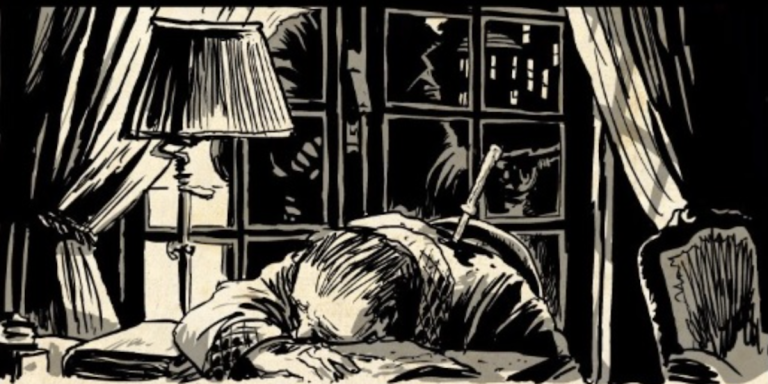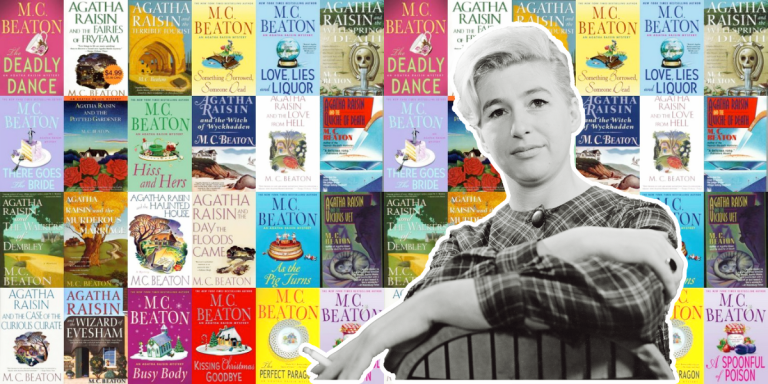What Exactly Is a Locked-Room Mystery?
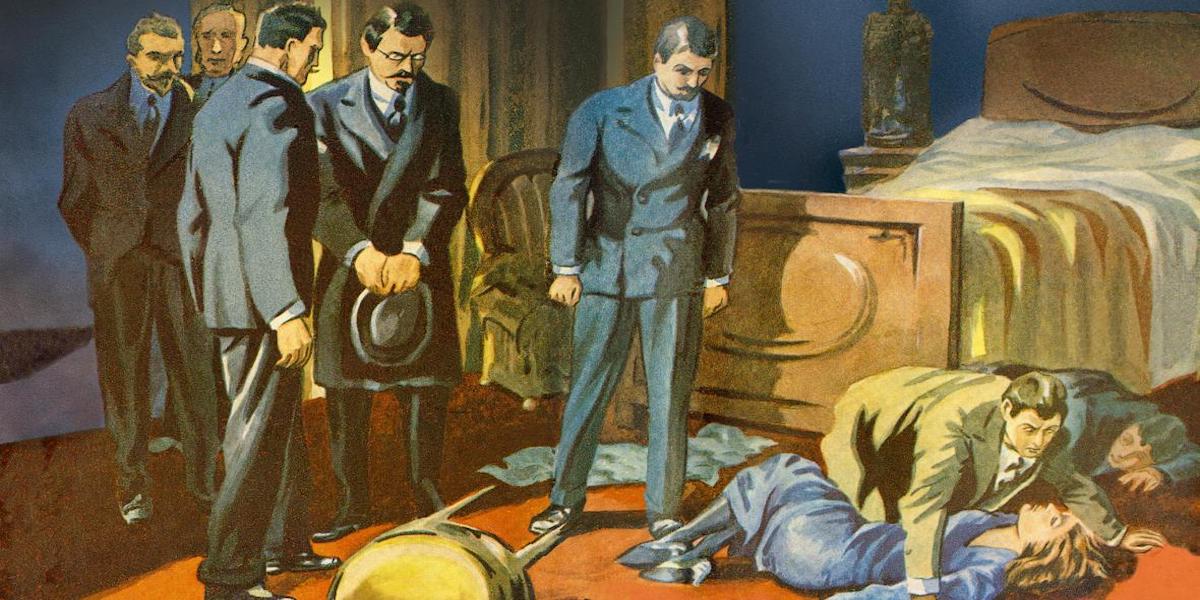 All my adult life, until recently, I lived in apartment buildings. That meant if I was home alone and I heard a noise, it was coming from inside the house, which means one of the other tenants is responsible. Then I moved into a house with my husband. Now when I am home alone and I hear a noise, IT’S COMING FROM INSIDE THE HOUSE. That means I should investigate. (Spoiler: It’s always the cats.)
All my adult life, until recently, I lived in apartment buildings. That meant if I was home alone and I heard a noise, it was coming from inside the house, which means one of the other tenants is responsible. Then I moved into a house with my husband. Now when I am home alone and I hear a noise, IT’S COMING FROM INSIDE THE HOUSE. That means I should investigate. (Spoiler: It’s always the cats.)
This works as an analogy for locked-room suspense books, a popular subset of the mystery genre. In a locked-room mystery, not only is there something to figure out, but it has restrictions. The explanation can only exist within a very limited set of answers. That’s what makes them so exciting—and harder to solve. It’s like, “Oh hey, let’s take a mystery and make it more difficult by making it seem impossible to have happened in the first place.”
There are two kinds of locked-room mysteries. The first kind involves a murder victim being discovered behind an actual locked door, meaning that if there was no way in or out of the room, how was it committed? And the second kind has grown from that to encompass actual areas, like houses or islands, in which a murder is committed. It’s carried out in a remote area or someplace cut off from civilization (usually by a storm) and the murderer can only be one of the people who are present at the time of the murder, so the solution lies within a limited set of suspects. (If you are thinking of the movie Clue right now, you absolutely get it.) THE SUSPENSE. How can you relax when you know one of the people around you is a murderer and you could be the next victim??
Locked-room mysteries rarely rely on supernatural solutions, unless it’s a supernatural book. The solutions to locked-room mysteries are usually something like a fake door or hidden panel in the room, intricate weapons, misdirection, or a false diagnosis. It’s the creativity involved that makes them so fun.
Early locked-room mysteries
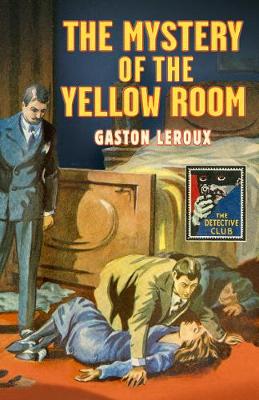 The earliest famous example of a locked-room mystery is Edgar Allen Poe’s 1841 short story The Murders at the Rue Morgue. (It’s also cited as one of the earliest examples of a detective story.) In it, two horrible murders have been committed in a locked room on the fourth floor of a house in Paris. C. Auguste Dupin takes it upon himself to figure out just how it could have happened. Remember that this kind of story had never been published before, so it was probably a lot more impressive back then to learn that—220-year old spoiler—the murderer turned out to be an orangutan, who scaled the building, climbed in through a window, and went into a homicidal rage. Now it just kind of sounds silly.
The earliest famous example of a locked-room mystery is Edgar Allen Poe’s 1841 short story The Murders at the Rue Morgue. (It’s also cited as one of the earliest examples of a detective story.) In it, two horrible murders have been committed in a locked room on the fourth floor of a house in Paris. C. Auguste Dupin takes it upon himself to figure out just how it could have happened. Remember that this kind of story had never been published before, so it was probably a lot more impressive back then to learn that—220-year old spoiler—the murderer turned out to be an orangutan, who scaled the building, climbed in through a window, and went into a homicidal rage. Now it just kind of sounds silly.
Other early examples of locked-room mystery books include Israel Zangwill’s The Big Bow Mystery (1892), which features another murder committed in a locked room in London, and The Mystery of the Yellow Room (1907) by Gaston Leroux, in which a woman is found unconscious behind a locked door in a French castle and can’t remember what happened.
Classic locked-room mysteries
As far as classics go, Agatha Christie has the honors of having authored the most famous locked-room mysteries. She wrote several, and among the best-known is And Then There Were None (1939), about ten people stranded in a mansion on a remote island who start dying one by one, and no one has any idea who the murderer is, just that it can only be one of them. Her other most famous locked-room mystery is Murder on the Orient Express (1934), in which a man on a train is murdered in his cabin overnight while the train is trapped on the tracks in a blizzard.
Another classic of locked-room suspense novels is The Tokyo Zodiac Murders by Soji Shimada (1981). It’s the story of an amateur detective who bets his friend that he can solve a 40-year-old unsolved crime involving an artist who supposedly murdered several women but was himself found murdered behind a locked door, so how did he pull it off? This is one of the most popular Japanese mystery novels of all time, so popular that for a time, Shimada had to move away because he was constantly hounded by fans.
Recent locked-room mysteries
As a mystery/suspense novel aficionado, I have read a LOT of locked-room mysteries. But I can say with certainty that my favorite recent entry to the genre is No Exit by Taylor Adams. No Exit is about a college student named Darby who gets stranded at a rest area with four strangers during a horrible blizzard. While they spend the night inside the visitor’s center waiting for the plow trucks to rescue them, Darby discovers a little girl locked in a van in the parking lot. The van can only belong to one of the strangers she’s presently spending the evening with—but which one? Darby must figure out
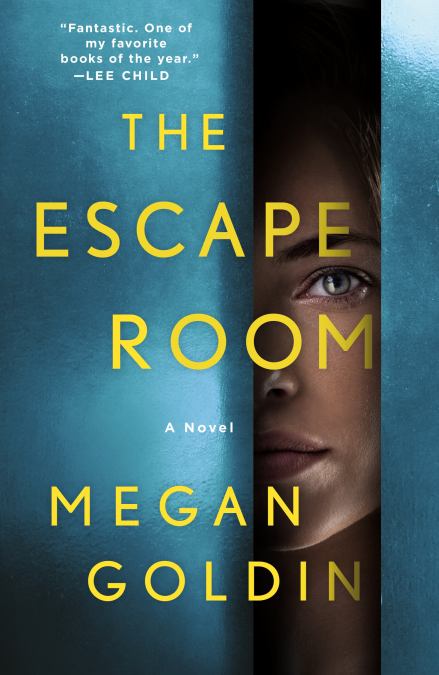
a way to rescue the girl without letting the kidnapper know that she’s on to them. It’s so packed with action and suspense! It’s like Die Hard in a rest area.
Other great recent locked-room mysteries include They All Fall Down by Rachel Howzell Hall, which is the author’s homage to And Then There Were None; Six Wakes by Mur Lafferty, which involves clones on a space ship trying to solvethe murders of their previous selves; Malice by Keigo Higashino, in which a Japanese novelist is found murdered in his locked office and all the suspects have rock solid alibis; An Unwanted Guest by Shari Lapena, which finds several people stranded in a vacation lodge with an unknown murderer in the middle of a blizzard (I told you there are a lot of weather-related incidents); and The Escape Room by Megan Goldin, where several cutthroat corporate climbers sign on for what they think is a team-building exercise, but turns out to be a locked-room game of murder.
By clicking 'Sign Up,' I acknowledge that I have read and agree to Hachette Book Group’s Privacy Policy and Terms of Use
What to Read Next
Liberty Hardy is a Book Riot senior contributing editor, co-host of All the Books, and above all else, a ravenous reader. She resides in Maine with her husband and her three cats, who hate to read.

